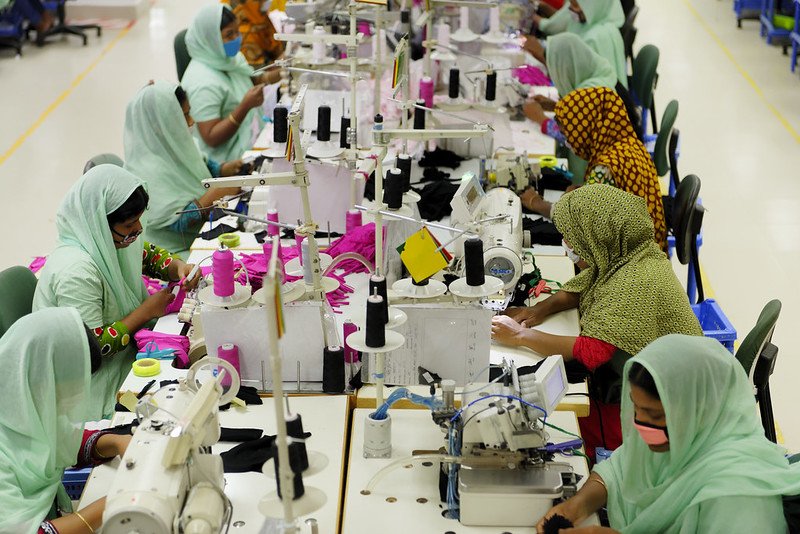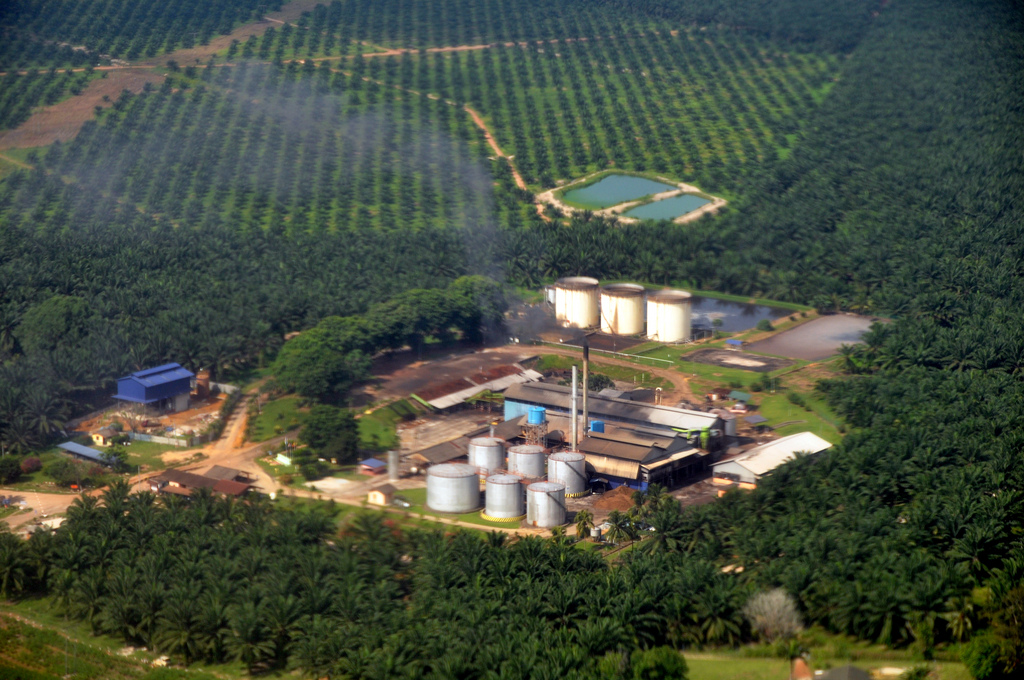By Peter Lund-Thomsen
Worldwide there is now a search for new ideas, business models, and innovations that can help us in rebounding from the global impact of COVID-19 and bring our planet and world onto a more sustainable future trajectory. One of the areas where this is evident is sustainability in global value chains where we have seen a global disruption of world trade in ways that have affected not only global brands but also suppliers and workers around the world. Some observers argue that this will result in a global backlash against attempts at making global value chains, for instance, the global garments and textile value chains, more sustainable. I.e. that COVID-19 will make brands and suppliers sacrifice long-term sustainability considerations at the expense of short-term business survival.
In my understanding,however, what these recent events demonstrate is not so much the need for new innovations and “thinking out of the box” but rather considering how the current organization of global value chains and thinking around sustainability have overlooked the importance of “supplier perspectives” on what social responsibility actually means in these chains. Amongst many practitioners, especially in the Nordic countries, there has been a tendency to assume that global brands’ adopting corporate codes of conduct and sustainability standards, asking value chain partners (i.e. suppliers) to implement these, and then auditing for compliance as well as helping suppliers to build capacity to enforce these guidelines would be sufficient.
The case of Bangladesh illustrates why this approach is insufficient. First, many brands have cancelled their orders with Bangladeshi garment suppliers, leaving local factories at the verge of bankruptcy, and hundreds of thousands, if not millions of workers at risk, potentially without any income to support themselves and their families. Second, even with orders that have been completed, some brands have refused to honor their contracts and either not paid for the goods received, substantially delayed payments, or asked for discounts on present or future orders from suppliers.
Globally, there has been condemnation of these “unfair” trading practices by both suppliers themselves (particularly in Bangladesh but also highlighted via social media) and also international labor advocacy organizations.
And third, the level of outrage is so strong that the Bangladesh Garment Manufacturers and Exporters Association has allegedly been considering placing a ban on particular brands so that they may not source garments from Bangladesh in the future as they have largely failed to live up to their “buyer” responsibilities towards suppliers and workers in Bangladesh.
To me, a key lesson learned from these events is that global brands, business associations, labor advocacy organizations, NGOs, researchers and students can no longer simply “overlook” supplier perspectives on social responsibility in global value chains.
The only realistic way forward is to take account of the concerns of these suppliers if global value chains are to be more resilient in the long run.
Many of these supplier concerns are already well-documented but tend to be either ignored or discarded by “global North stakeholders” in their policies, practices or discourses more broadly – for instance, in how they conceive and talk of sustainability in sustainability conferences around the world.
Just to recap some of the main points that we have learned from studies of supplier perspectives on social responsibility:
a) The factory manager dilemma – e.g., factory managers and owners – for instance, in the global garment industry – have had been asked for continuous price declines by many of their buyers while the same brands have asked for increased levels of social compliance at the same time.
b) The same dilemma arises when factory managers are asked to provide living wages around the year by their buyers when demand is seasonal and price competition is fierce in the global garment industry. For most suppliers having workers sitting around idle for part of the year is not a viable business option.
c) In addition, there is a general unwillingness amongst most (but not all brands) to co-finance – for instance, 50% – of the necessary social upgrading of factories in countries such as Bangladesh. Hence, brands tend to push “social responsibility” onto their suppliers rather than co-investing in and jointly bearing the costs of these improvements themselves.
d) Profits earned from selling goods sold to end consumers in the global North remain highly unequally shared amongst the (ironically called) value chain partners – often with suppliers winding up with 10-20 percent of the value of final retail price.
e) In addition to this, global North (read: Scandinavian) stakeholders including brands, government representatives, NGOs, students, and others often perceive “sustainability” in value chains as mainly relating to environmental and (to a lesser degree) social responsibility in the value chain. Hence, the general talk often seems to be about how suppliers should make environmental and social investments without considering the need for addressing existing inequalities – i.e. unequal distribution of value in these chains – and the business aspects of running supplier operations. In fact, for many suppliers in countries such as India, Pakistan and Bangladesh, sustainability is first and foremost related to “economic” or “financial” sustainability. Only when suppliers are profit-making can they afford to invest in social and environmental improvements. This is not exactly rocket-science but a point that often seems to be completely overlooked by Scandinavian “sustainability” advocates.
f) Finally, what is sometimes considered “social responsibility in global value chains” in the global North might be narrowly defined as the payment of minimum wages, overtime payment, social insurance, and the implementation of occupational health and safety measures in supplier factories. Of course, I am all for supplier factories implementing these measures. However, I also sympathize with many suppliers, NGOs and other stakeholders in the global South that point to other aspects of social responsibility that may be more contextualized.
For instance, in South Asia, many studies have pointed to factory managers helping to finance the education/school fees of the children of some of their workers. Financing the weddings of young workers or the weddings of the sons/daughters of their workers is another sign of social responsibility amongst many factory owners in South Asia.
From a Scandinavian perspective, this may not be related to “social responsibility”.
However, in the sub-continent, where your wedding day is often considered the most important day in your life, and very important for your family’s wider social standing in society, employers’ financial support may be seen a very valid act of practicing “social responsibility”.
Providing tea to your workers may also be considered an act of “social responsibility”. Again – from a Scandinavian perspective – this may not be considered a big act of social responsibility. However, then again, is it really that difficult to understand? How many of us in Scandinavia do not value it when our own employers provide us with free tea or coffee? It gives us the opportunity to socialize with our colleagues or take a much needed break between different work tasks. Why should it be any different in countries such as India and Pakistan where tea drinking could almost be considered a national sport?
Moreover, some factory managers in South Asia allow especially young mothers or women with even slightly older children the option of either working part-time (when the kids are in school or someone else is at home to take care of them) or engaging in home-working so that they may look after their kids while engaging in for instance (embroidery) whenever there is a free moment. Of course, I do recognize that home-working is also often associated with receiving very low wages and not having any social insurance.
However, during COVID 19, even in the Scandinavian context, homeworking has become an absolutely essential part of keeping private companies and public institutions afloat crisis under such compelling circumstances. It has also involved many challenges for families with young children who had to engage in home-based work (typically computer-based) and taking care of their children simultaneously.
Yet if homeworking is indeed not only allowed but also encouraged by most employers in Scandinavia, why it is that brands in the global North sometimes impose an outright ban on their suppliers outsourcing particular work tasks to “home-based locations”?
No wonder that many factory owners and managers in the global South believe that global brands practice double standards when it comes to their social responsibility requirements (i.e. ‘do as I say but not as I do’).
In conclusion, there seems to a great need in Scandinavia for raising our own levels of awareness about the commercial challenges faced by suppliers and acknowledge the myriad ways in which “social responsibility” may be thought of and practiced – of course, without throwing out the baby with the bathwater. Compliance with core labor standards remains a key concern, but it is not the only way of conceiving of supplier responsibility in global value chains.
About the author
Peter Lund-Thomsen is Professor at the Department of Management, Society and Communication at Copenhagen Business School. His research focuses on sustainable value chains, industrial clusters, and corporate social responsibility with a regional focus on South Asia.
More about Covid-19 pandemic on Business of Society blog:
Building A Better Planet: Toward a Sustainable Post-COVID-19 Society
How the pandemic can reset cities and transform aspects of urban mobility
The Coronavirus Pandemic – and the Consequentiality of Metaphors
Sustainable Development, Interrupted?
The Political Economy of the Olympics – Misconceptions about Sustainability
Supply Chain Responsibilities in a Global Pandemic
A Green and Fair COVID-19 Recovery Plan
In Movement from Tanzania to Northern Italy to Denmark
How to make food systems more resilient: Try Behavioural Food Policies
Lobbying and the virus – three trends to take note of

